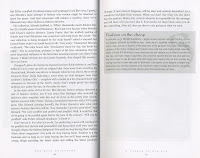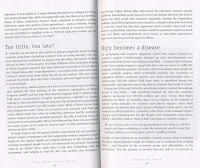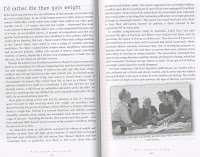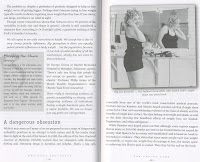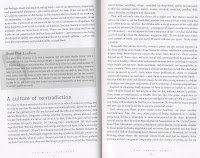Kerry Lauren: Dissertation
How has image-editing software such as Photoshop, influenced and distorted our observation of the female in fashion editorial (Magazines)?
Wednesday, 21 November 2012
3 - Films/TV
-‘A Secret Between
Friends/When Friendship kills’, Contner, James A. 1996.
-‘Black Swan‘,
Aronofsky, Darren, 2010.
-‘Centre Stage’,
Hytner, Nicholas. 2000.
-‘Dying to Dance’,
Haber, Mark. 2001.
-‘For the love of
Nancy’, Schneider, Paul. 1994.
-‘Kate’s Secret’,
Seidelman, Arthur Allan. 1986.
-‘Little Girls in
Pretty Boxes’, Leitch, Christopher. 1997.
-‘Perfect Body’,
Barr, Douglas. 1997.
-‘Sharing the Secret’,
Shea, Katt. 2000.
-‘Slender Existence’,
Murray, Laura C. 2000.
-‘Supersize vs
Superskinny’, 2008-2009.
-‘The best little
girl in the world’, O’Steen, Sam. 1981.
-‘The Body Beautiful Season’, BBCThree.
-‘To be fat like me’,
Barr, Douglas. 2007.
2 - Documentaries
-‘Dana: The eight year old Anorexic’, 2007.
Clifford, Veronica. Rhodes Farm, Channel 4.
-‘Dying to be thin’,
2000. McPhee, Larkin. NOVA.
-‘Hunger Point’,
2003. Silver, Joan Micklin. Lifetime.
-‘Race to Size double Zero’, 2007. Larkin,
Kathleen. UK, Channel 4.
-‘Thin’, 2006.
Greenfield, Lauren. Florida, HBO.
-Several
Documentaries on Youtube about Body Image, Distortion etc.
1 - Books/Texts
- Ahmad, Sarah. 1998, ‘Differences
that Matter: Feminist
Theory and Postmodernism’, First Edition, Cambridge, University
Press.
- Apeagyei, Phoebe. December 2011,
Issue 4, Pg242-251, ‘The impact of
image on emerging consumers of fashion’ Volume 13, Article.
- Articles from Magazines/Newspapers such as Daily
mail, Vogue etc. Also several Blog articles and websites.
- Grogan, Sarah. 1998, ‘Body image: understanding body dissatisfaction in
men, women and children’, First Edition, East Sussex,
Routledge.
- Johnson, Kim K. P. Lennon Sharron J.
1999, ‘Appearance and Power’.
Michigan, Berg.
- Kalat, James W. 2007,
‘Biological Psychology’, Tenth Edition, Belmont USA, Jon-David Hague.
- MacDonald, Myra. 2009, ‘Representing Women: Myths of Femininity in the
Popular Media’, Second Edition, USA, Bloomsbury USA.
- McRobbie, Angela. 1998, ‘British
Fashion Design: Rag Trade or Image Industry’, First Edition, London, Routledge.
- Meredith, Bronwen. 1979, ‘Vogue Natural Health and Beauty’,
First Edition, USA, Viking.
- Tebbel, Cyndi. 2002, ‘Body Snatchers: How the Media Shapes Women’,
First Edition, Australia, Finch Publishing
- Thornham, Sue. 2007, ‘Women, Feminism and Media’, Edinburgh, Edinburgh University Press Ltd.
- Wolf, Naomi. 1991, ‘The Beauty Myth: How Images of Beauty are
Used Against Women’, Second Edition, London, Vintage books.
- Wykes, Maggie. 2005, ‘The Media and Body Image: If Looks Could
Kill’, First Edition, London, Sage Publications Ltd.
Questionnaire
18 people filled out my Questionnaire.
Male - 8
Female - 10
Ages - 20 (3), 21 (9), 22 (3), 23 (1), 30 (1), 36 (1).
Read Fashion Magazines - 10
Don't read Fashion Magazines - 8
Agree with the way in which the Media portrays Women - 1
Disagrees - 17
94% of people disagree with the way in which the Media portrays Women.
People feel this because:
It is Feminist,
Unhealthy and inadequate,
Treated differently to men,
Many articles are manipulated and unrealistic,
Encouraged to be 'perfect' and can lead to bad lifestyles,
Makes women feel like they are supposed to look like this (size 0) etc.
88% of the men I asked preferred the curvier or athletic woman.
90% of women I asked preferred the more athletic man.
6/10 women prefer un-airbrushed models in Magazines.
7/8 men prefer un-airbrushed models in Magazines.
Why - No:
Why admire something that isn't real?
Natural is more beautiful than fake.
False.
Why - Yes:
Its artistic and looks better.
More appealing.
Nicer to look at.
25% of men are happy with their shape.
37.5% of men would like to be bigger.
37.5% of men would like to be slimmer.
70% of women would like to be slimmer.
10% of women are happy with they size they are.
20% of women would like to be bigger.
What i found in my results...
I found that women are more likely to want to be slimmer and more people than not would like it if the media stopped treating women in a bad way. Men are less likely to want to be slimmer...
Male - 8
Female - 10
Ages - 20 (3), 21 (9), 22 (3), 23 (1), 30 (1), 36 (1).
Read Fashion Magazines - 10
Don't read Fashion Magazines - 8
Agree with the way in which the Media portrays Women - 1
Disagrees - 17
94% of people disagree with the way in which the Media portrays Women.
People feel this because:
It is Feminist,
Unhealthy and inadequate,
Treated differently to men,
Many articles are manipulated and unrealistic,
Encouraged to be 'perfect' and can lead to bad lifestyles,
Makes women feel like they are supposed to look like this (size 0) etc.
88% of the men I asked preferred the curvier or athletic woman.
90% of women I asked preferred the more athletic man.
6/10 women prefer un-airbrushed models in Magazines.
7/8 men prefer un-airbrushed models in Magazines.
Why - No:
Why admire something that isn't real?
Natural is more beautiful than fake.
False.
Why - Yes:
Its artistic and looks better.
More appealing.
Nicer to look at.
25% of men are happy with their shape.
37.5% of men would like to be bigger.
37.5% of men would like to be slimmer.
70% of women would like to be slimmer.
10% of women are happy with they size they are.
20% of women would like to be bigger.
What i found in my results...
I found that women are more likely to want to be slimmer and more people than not would like it if the media stopped treating women in a bad way. Men are less likely to want to be slimmer...
Tuesday, 20 November 2012
A video I found on Youtube about Body Image
http://www.youtube.com/watch?v=31Ajvix6DXs&feature=g-vrec
Monday, 19 November 2012
Something Tyra said on America's Next Top Model
She says 'she likes that Laura isn't super skinny, she likes that she has an ass' and she states that 'the Fashion world is changing' to like and accept more models like this.
Yeyeye Tyra Banks. :)
An email sent to the Vogue Editor on 10/11/2012
To vogue.com.editor@condenast.co.uk
Hello,
My name is Kerry Lauren Heaney, I am a Graphic Design Student in my last year at University. I am now writing my Dissertation and have chosen a Fashion related question as I am very interested in that particular area and a huge fan of Vogue. I was wondering if you could help me out by answering a few questions, this would really help me with my research being the best Fashion Magazine out there!
The questions are;
-Which image editing software do you use in Fashion-Editorial to airbrush models?
-What is the percentage number of Women and Men whom are Airbrushed before the images of them are published in your Magazine?
-Would you ever publish un-airbrushed models in your magazine?
Thankyou so much for your time, answers to these questions would definitely help me a lot with my Dissertation Research!
-I sent this email on the 10/11/2012. They have yet to reply. I don't think i will get a reply as it is a really sensitive issue in the Fashion World. Issues such as eating disorders etc tend to be ignored in this industry.
Insecure
Are we actually insecure because we don't like the way we look and we are not confident about it anyway or is it because we constantly compare ourselves to the perfectly airbrushed models and slim people and feel self-conscious because of this. Anorexia figures have doubled in the past 10 year and a lot of this is due to the airbrushing in Magazines. People don't feel good enough, they don't feel they deserve to eat because they feel fat against the unrealistic ideal of people in Magazines.
Why is it
Why is it, that it is always the reporters commenting on how, she went out without any make-up on, she's put on weight, she must be pregnant, what is she wearing, who is she dating this week, she looks awful on the school run, she's died her hair etc etc. Or sometimes it can even be positive, she's been on a diet and she looks amazing... This is usually the kind of articles i see online and it is hardly ever the male that is being scrutinised, even thought it is a woman doing the writing. People just accept that women are treated like this and move on with their lives. But if somebody says something bad about a man, for example Justin Beiber (ok - a boy!) was wearing something hideous, if somebody says something bad about this, there is an uproar and everybody hates that person. But apparently its also ok for the paparazzi to hound celebrity children and make them feel bad about them selves when they are probably not even aware of what is going on (the child). It's not ok! Something needs to change, there should only be allowed to be positive things said about people or nothing at all. But this doesn't sell! :/
I will be keeping up-to-date with BBC Three’s The Body Beautiful Season
'On air this November, BBC Three’s The Body Beautiful season features a collection of enlightening documentaries that question whether making changes to your body can bring you happiness whilst highlighting the variety of ways young people are striving for these physical changes.'
Looking through
Looking through most Fashion Magazines, there is a section for Beauty and Clothing, what is in Fashion, which scent you should be wearing, which make-up trend you should be keeping up-to-date with etc. Never does it ever say, just wear what you like, what you feel comfortable in, you don't need make-up, you are perfect as you are, you don't have to work out this week because you are not over weight or out of shape, you should be comfortable in your own skin. Obviously not, as this wouldn't sell any Magazines. So why do women and men buy magazines that make them feel inadequate? Do they do it to 'fit-in' or because they like to read it. We do it because we like to read about this sort of thing even if it does make us feel inadequate next to the picture-perfect-every-time models that show us how we should look. Looking through this months 'Glamour' Magazine nearly every single page is filled by a beautiful looking women and even some are beautifully chiseled men looking perfect (clearly airbrushed). The advertisements at the back are for plastic surgery and education to 'better yourself'. Looking through the contents page I can see interviews with celebrities (a reporter asking a famous person about their beauty regime, how they look good all of the time and if they have got any advice on how we can all stay in shape like they do), next is 'how to look great during sex' and other relationship stuff (for example; how to always look great for your man), the next couple of pages are about new diets and super-foods that keep you in shape, then we have the new haircut that everybody can pull off, every body needs and looks great with and a lot of pages of clothes that are overly expensive but super slimming and every woman needs them. Then we have all the new creams and serums that banish cellulite and expel every lump and bump you have out of place. And we still buy these Magazines every month even though they make us feel bad about ourselves, we end up buying these products, knowing they could never work and wearing ridiculous clothes because they are in-fashion but everyone loves a 'good read' and likes to see the 'pretty pictures'. This is why the Fashion Industry is a £20 billion a year industry!
Sunday, 18 November 2012
Friday, 9 November 2012
Quest - Journal
THE IMPACT OF IMAGE ON EMERGING CONSUMERS OF FASHION.
*CONSUMERS -- Attitudes
*GENERATION Y
BODY image
FASHION
CELEBRITIES
Celebrities
Fashion
Trend
Wednesday, 31 October 2012
Attention Seeking?
More and more 'Photoshop Failures' are being noticed in Magazines and Catalogues. For example clothing companies making their girls too skinny or showing a loss of a limb due to airbrushing failures. But has it become too controversial and now companies are doing it on purpose to gain media attention. It can only make sales increase. As they say 'No publicity is bad publicity.'
Just look at this image:
Article
Just look at this image:
Article
Tuesday, 23 October 2012
Monday, 22 October 2012
Reverse Retouching
The latest trend in image alteration might surprise a few people who are familiar with the power and pervasiveness of the thin ideal. Known as “reverse retouching,” this new trend has editors now adding curves and inches in specific areas of women’s bodies to create more voluptuous figures.
http://www.beautyredefined.net/curvy-is-the-new-skinny-thanks-to-photoshop-phoniness/
http://www.beautyredefined.net/curvy-is-the-new-skinny-thanks-to-photoshop-phoniness/
Karlie Kloss
This is top model Karlie Kloss. She was recently photographed in Black and White by Greg Kadel for Numéro magazine. The second image is the original image shot by Kadel and the first image is the one that was shown in the magazine. Her ribs had to be edited out as she looked so thin.
Kadel's Studio stated:
It was Greg's desire to represent Karlie as she naturally is ... slender, athletic and beautiful. That is why he released the images as he intended them to be seen by the public. He is shocked and dismayed that unbeknownst to him, Numéro took it upon themselves to airbrush over his original images. Greg stands by his original artwork and cannot stress enough that he not only was unaware of the magazine's retouching but also finds the airbrushing of Karlie unacceptable and unnecessary.
Wednesday, 17 October 2012
Scope...
·
scope:
state the limitations/perimeters of research area
·
aims
& objectives: what do you hope to achieve. Include clear
statements of intent.
· research methods: explain where
the information has/will come from. Could include a brief review of key secondary texts or justify approach to primary research. Highlight any potential problems/gaps
in research and how they will be overcome.
In my Dissertation I will be looking into how image-editing software such as Photoshop has influenced and
distorted our observation of the female in fashion editorial (Magazines). For
this I will be reading several books such as; Naomi Wolf’s ‘The Beauty Myth’,
‘The Body Snatchers: How the media shapes women’ by Cyndi Tebbel. I read
Magazines all of the time, such as Vogue and Wonderland and it is clear to me
that women in these magazines are thought of a lot as objects and can be
disposed of at the editor’s discretion. A magazine like this is made up of
advertisements featuring women, which are highly airbrushed and edited to make
them look unrealistic just to sell a product. These kinds of Magazines also
include clothing that is ‘in fashion’ and women feel the need to buy it to feel
worthy and accepted. Clothes usually go out of fashion quite quickly and trends
do not last, its one thing after another all to make money. There are usually
beauty pages included here as well. These show women what they should look like
and tutorials of how to fit in the latest trend along with tons of products you
can buy to do this. Women are never quite good enough for these magazines, on
every page there is something that a women should be doing, whether its walking
a dog, looking wafer thin, wearing ridiculously high shoes for a perfume or sat
on a train with outrageously pretty models, wearing fur to advertise a bag for
Louis Vuitton.
This is the kind of thing
I will be looking in to. I will also be looking into areas such as models with
eating disorders and drug problems and how it is widely ignored in the industry
but yet so plain to see.
I will also be looking
into sexual discrimination in the fashion industry and how it is usually the
women that are seen as not good enough and need to change the most ‘Female
sexuality is turned inside out from birth, so “beauty” can take its place,
keeping women’s eyes lowered to their own bodies, glancing up only to check
their reflections in the eyes of men.’ (Naomi Wolf – The Beauty Myth, pg 155,
Sex).
I will write about how it
is usually women, which do not feel good enough and feel the need to change
their image through things such as make-up, surgery, weight and styling. They
also feel the need to ‘touch-up’ photographs or get rid of what they consider a
‘bad’ photograph.
Subscribe to:
Posts (Atom)

